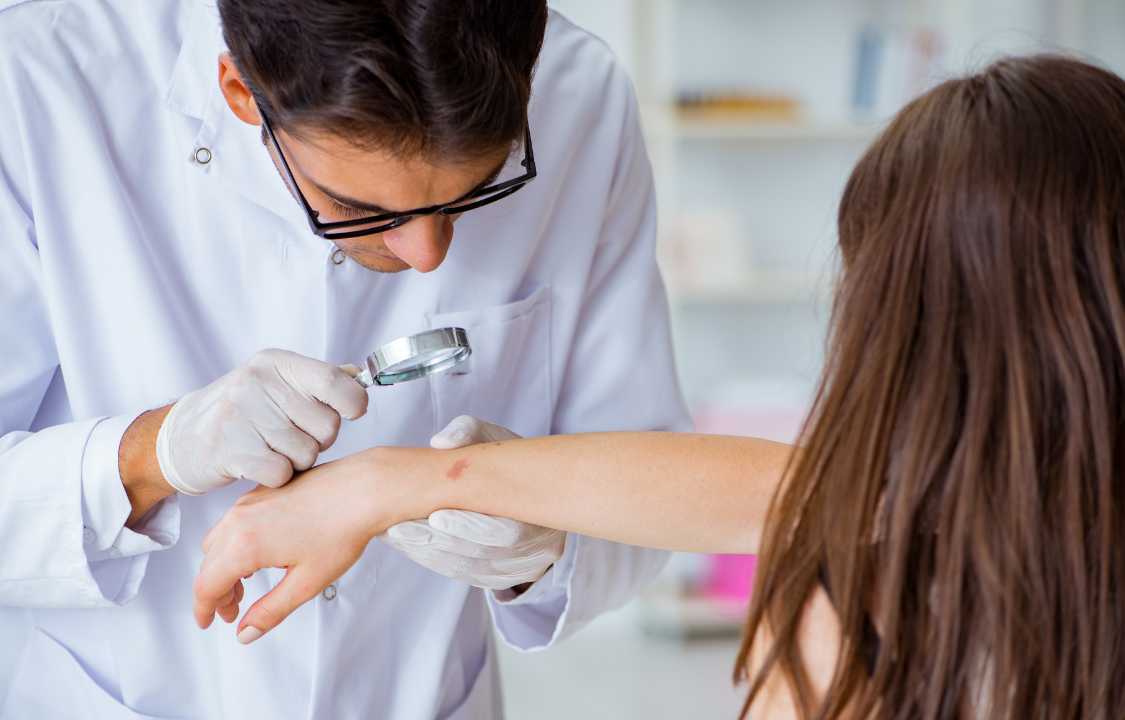Health Care
Check Out Your Skin
Performing regular full-body check-ups of your skin can be essential for identifying abnormalities that may indicate skin cancer. Dr. Abigail H. Waldman, the director of the Mohs and Dermatologic Surgery Center at Harvard-affiliated Brigham and Women’s Hospital, emphasizes the importance of noting and monitoring anything new or unusual on your skin, even though many skin spots and growths are related to normal aging and may not be cause for concern.
Do a self-check
To perform a thorough self-exam for skin abnormalities and potential signs of skin cancer, Dr. Waldman recommends the following steps:
1. Face, Neck, Ears, and Scalp:
- Use a full-length mirror, a handheld mirror, and a comb or blow dryer to examine your face, neck, ears (especially behind them), and scalp. Move your hair to get a better view.
2. Front and Back of the Body:
- Use the full-length mirror to examine the front and back of your body. Raise your arms and check your left and right sides.
3. Arms:
- Bend your elbows and carefully examine your fingernails, palms, the back of each hand, forearms (including the undersides), and upper arms.
4. Legs and Buttocks:
- Check the back, front, and sides of your legs. Examine the skin all over your buttocks and genital area.
5. Feet:
- Sit down and examine your feet, including the soles, spaces between your toes, and toenails.
Having someone assist you during this self-exam can be beneficial to ensure that you don’t miss any areas. Performing this head-to-toe self-exam every three to six months helps in early detection and monitoring of any changes on your skin.
During your self-exam, pay attention to the following features and characteristics of your skin:
1. Moles: Note any new moles or changes in existing moles, including size, shape, color, and border irregularities.
2. Sores: Be aware of any persistent sores that do not heal.
3. Painful or Itchy Spots: Identify spots on the skin that are painful or itchy, especially if they persist.
4. Raised or Firm Bumps: Check for any raised or firm bumps on the skin.
5. Dark Flaky Patches: Look for dark flaky patches or areas with unusual texture.
6. Lines Along Fingernails and Toenails: Examine the nails for black or brown lines, as well as any changes in texture or color.
7. Firmness: Feel for firmness in suspicious areas, as changes in texture can be significant.
After each self-exam, record the date, locations, and details of what you observe. Taking photos with your phone can provide a visual record to share with your doctor or dermatologist. Follow up on any areas that haven’t improved, have changed color or size, become painful, or easily bleed, as these may be signs of concern. Early detection is crucial for effective skin cancer management.
Looking for skin cancer
The ABCDE guide and awareness of specific skin issues can be crucial for identifying potential skin cancer during self-exams. Here’s a summary of what to look for:
ABCDE Guide for Melanoma:
1. Asymmetry: One half of the mole doesn’t match the other half.
2. Border: Ragged or blurred edges.
3. Color: Uneven shades of red, brown, blue, black, or white.
4. Diameter: About a quarter of an inch or larger.
5. Evolution: Any changes in size, shape, or color.
Other Skin Issues:
1. Freckles: Monitor large, irregular freckles, especially if they grow or change appearance. This can be associated with lentigo maligna melanoma.
2. Basal Cell Carcinoma (BCC): May appear as a bleeding pimple, open sore, red patch, shiny pink growth, or scar. Slow-growing and easy to treat if caught early.
3. Squamous Cell Carcinoma (SCC): Resembles a crusted, scaly red bump, patch, or wart. Usually not life-threatening and easy to treat if caught early.
4. Actinic Keratoses (AKs): Rough, gritty, sometimes painful growths that can be flat or slightly raised. Various colors, appearing on sun-exposed areas. While not initially dangerous, AKs may lead to SCC if left untreated.
If you notice any changes, consult with a dermatologist for a thorough evaluation. Early detection and prompt treatment significantly improve outcomes for skin cancer.

